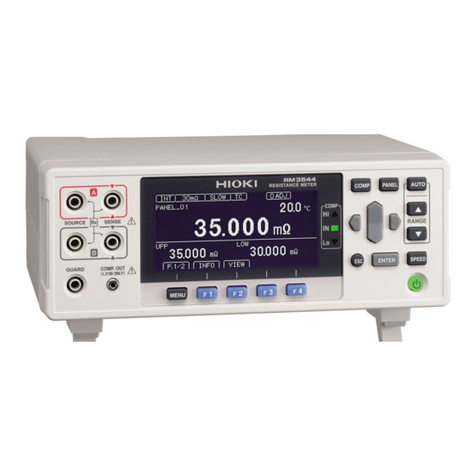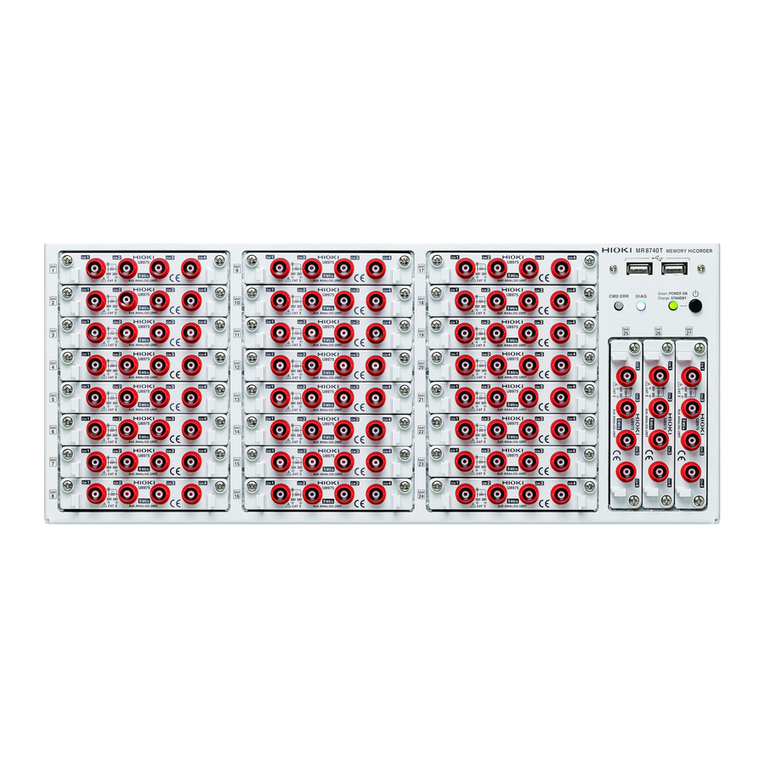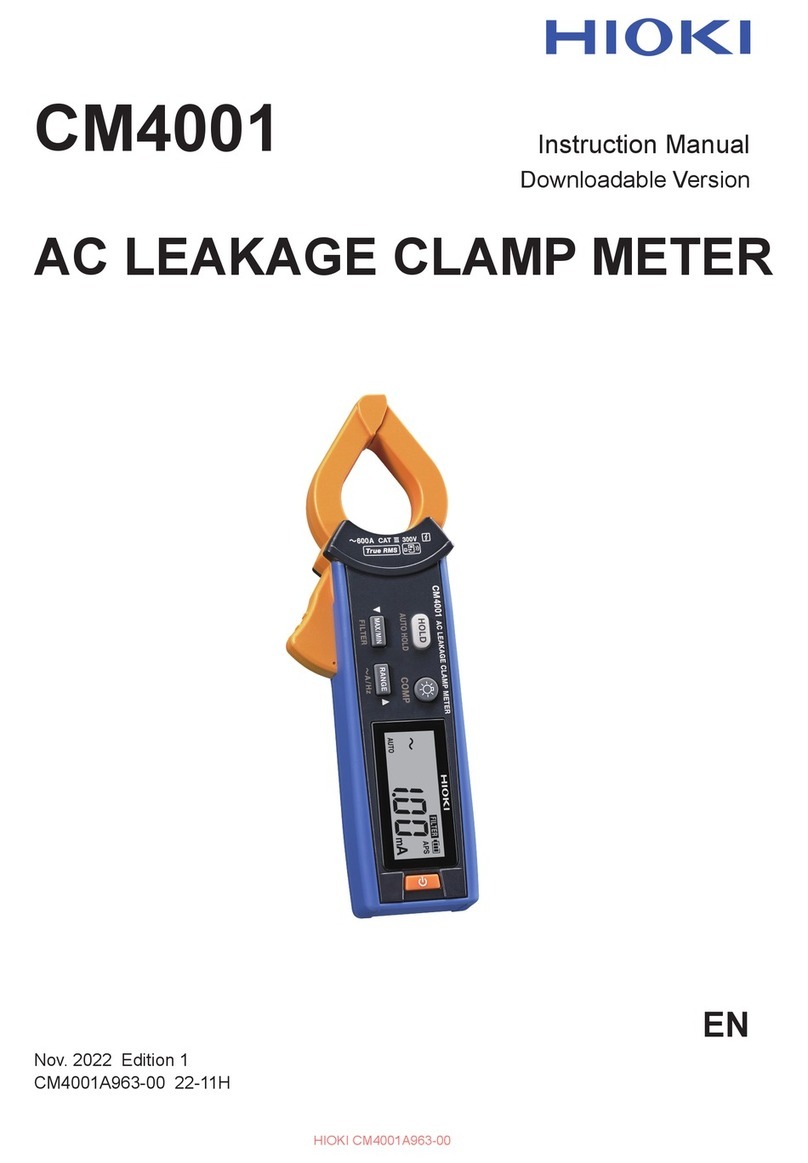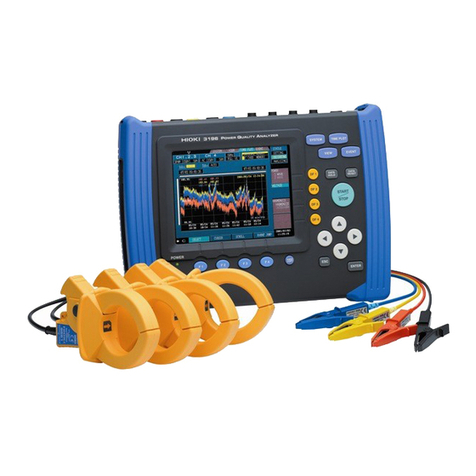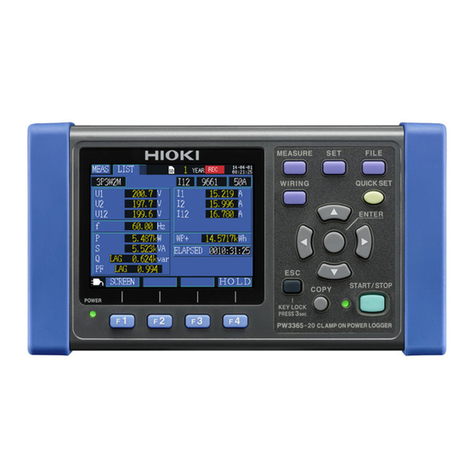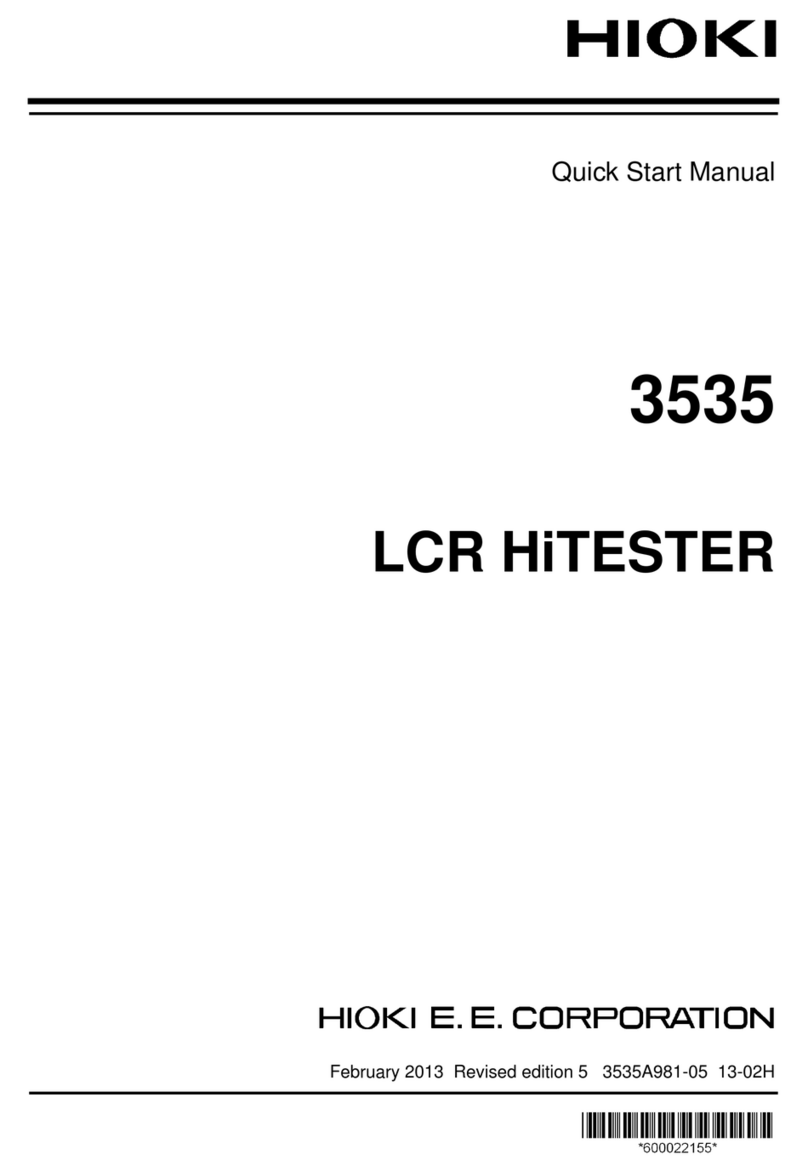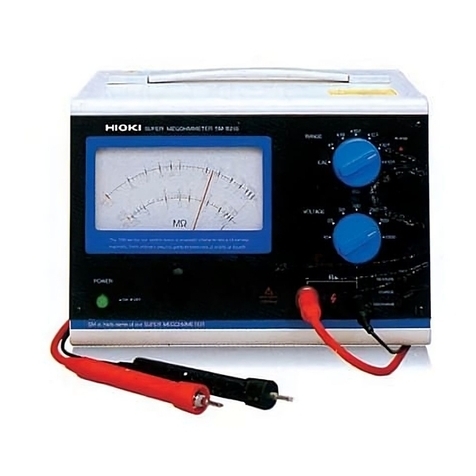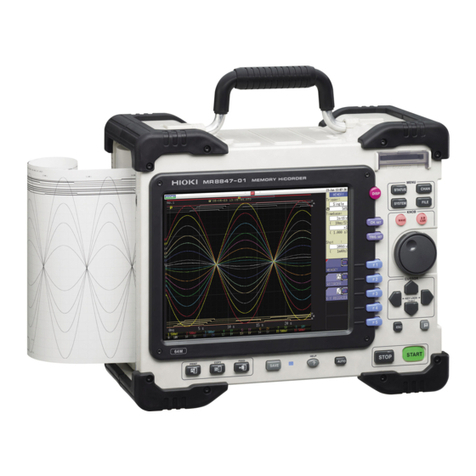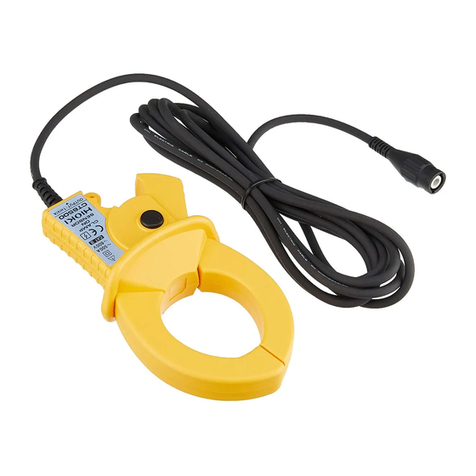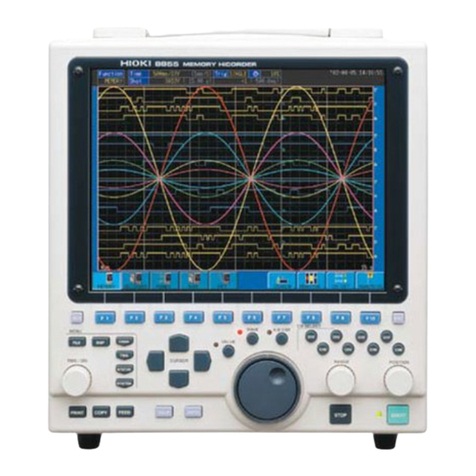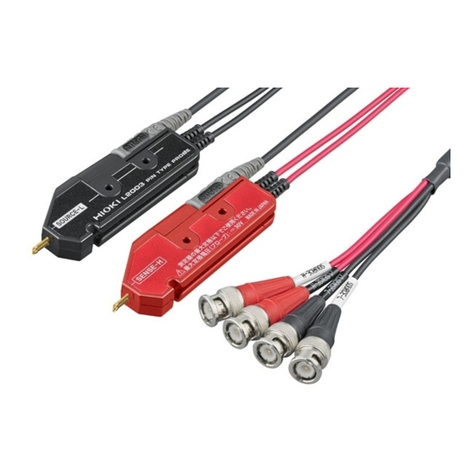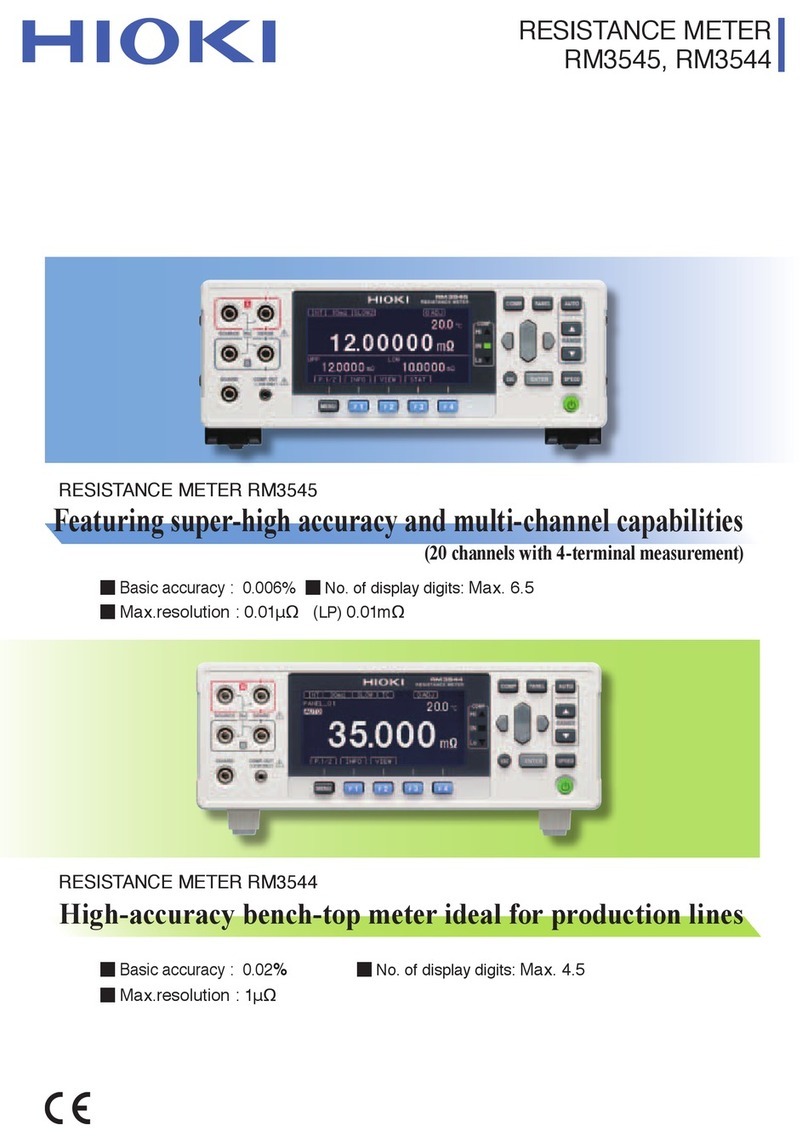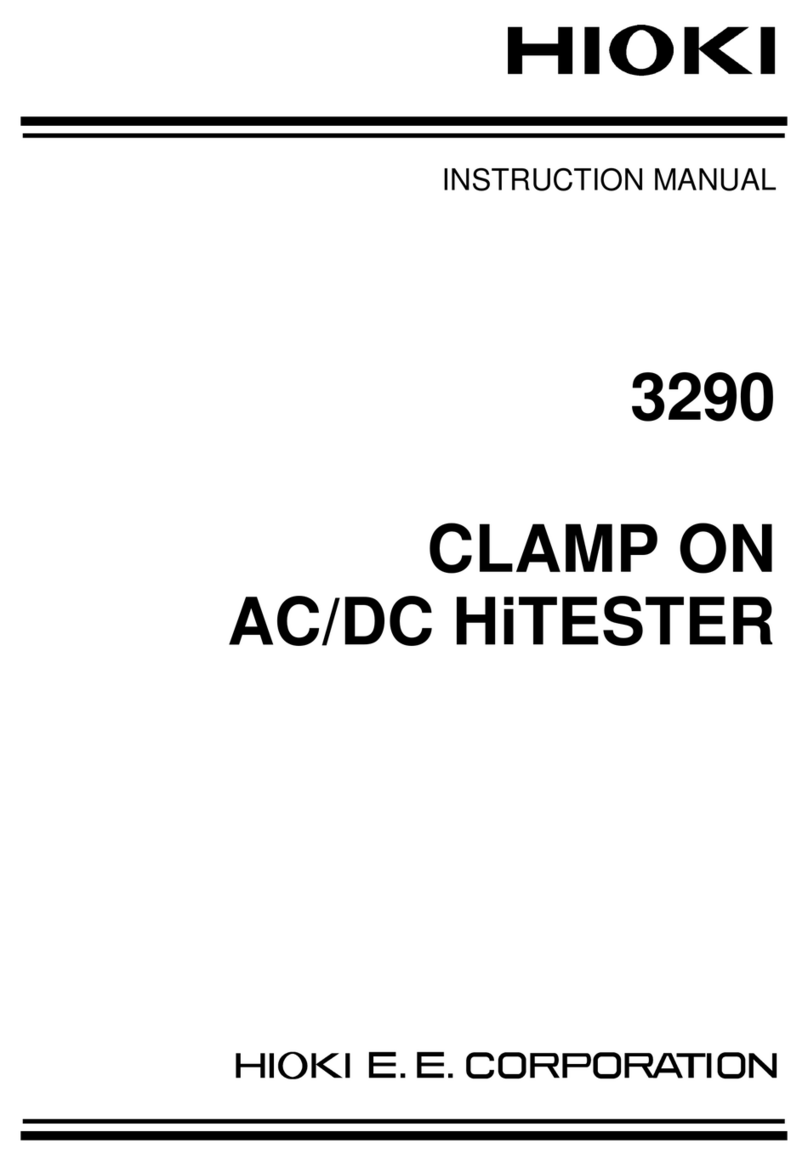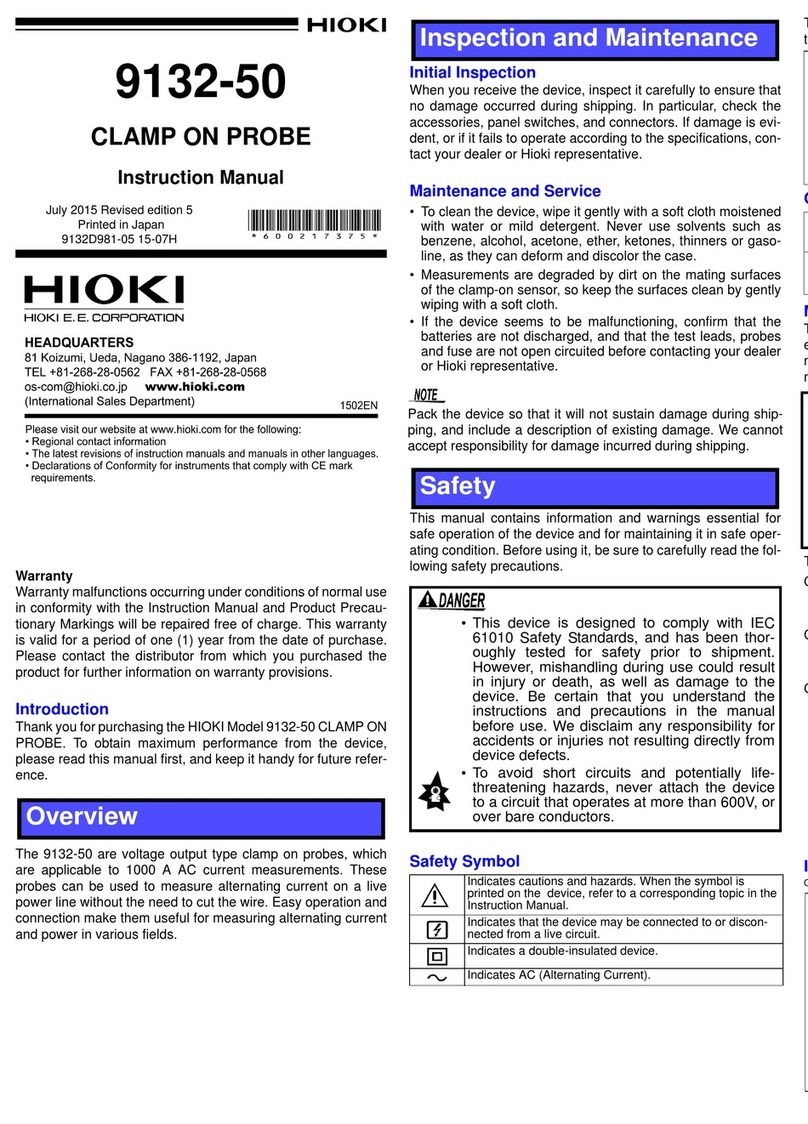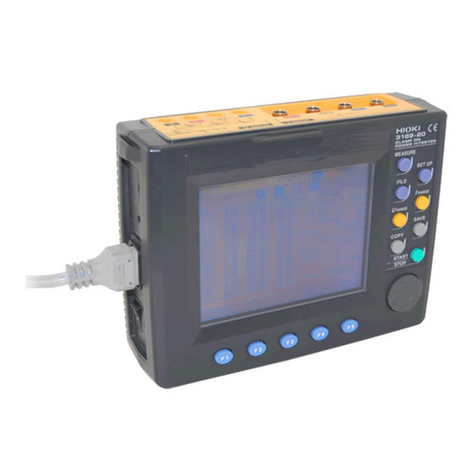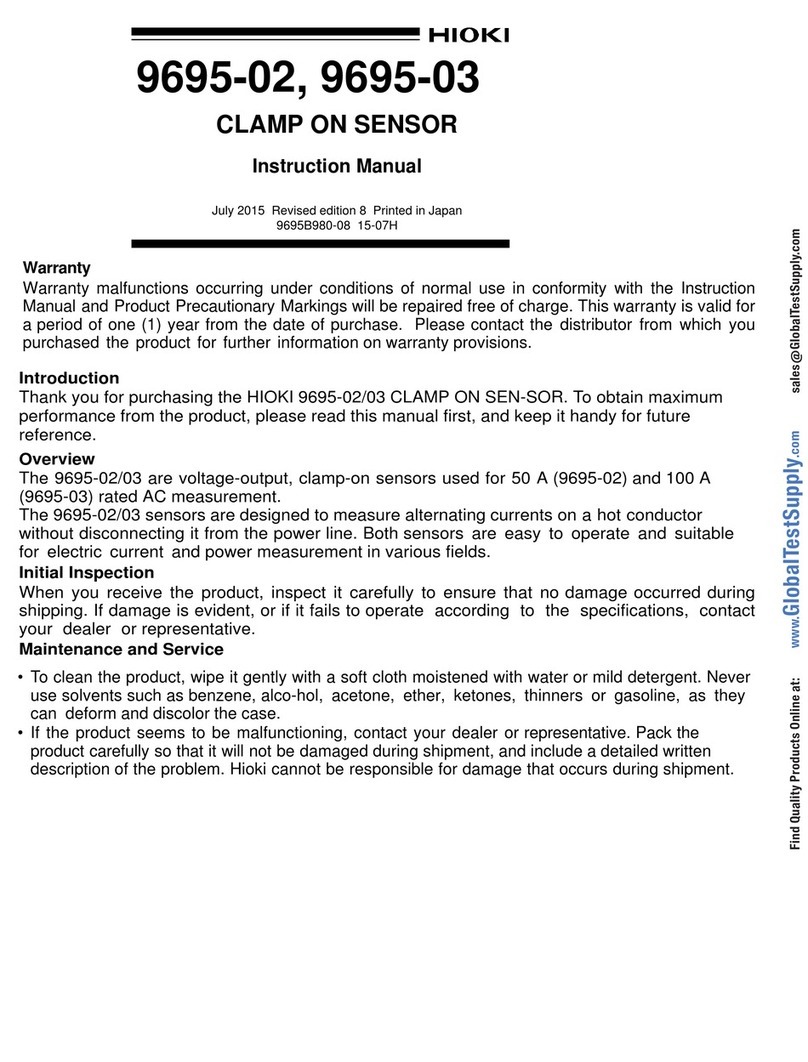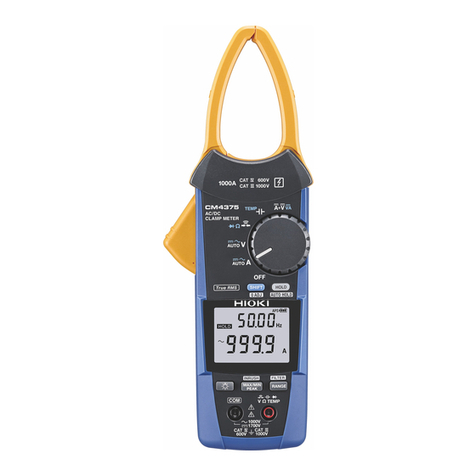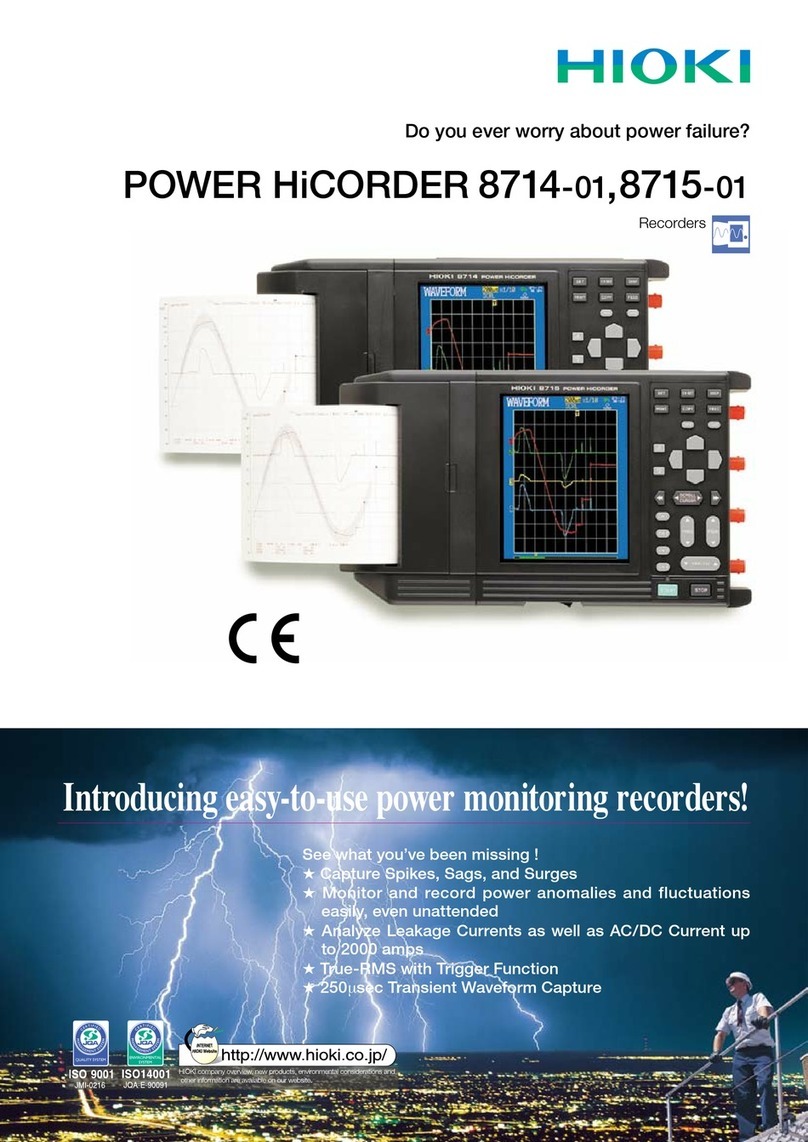
Contents
i
Basic Operation.............................................. 1
Introduction..................................................... 2
Confirming Package Contents........................ 2
Safety Information .......................................... 3
Operating Precautions.................................... 5
Chapter 1
Overview 9
1.1 Product Overview and Features .......... 9
1.2 Names and Functions of Parts ........... 10
SPAN (span adjustment) .......................... 12
Chart cover ............................................... 12
Chapter 2
Measurement Preparations 13
2.1 Pre-Operation Inspection ................... 13
2.2 Loading Recording Paper ..................14
Loading Fanfold Recording Paper ............ 14
Loading Roll Recording Paper.................. 15
2.3 Installing the Pens .............................. 16
Installing Pens and Using the Pen Caps .. 16
2.4 Connecting the Power Source
(Alkaline Batteries or AC Adapter) ..... 17
Installing Alkaline Batteries....................... 17
Connecting the AC adapter ...................... 18
Using a DC Power Source........................ 18
2.5 Turning the Instrument On and Off .... 19
2.6 Connecting Measurement Cables
to the Input Terminals ........................ 20
2.7 Attaching and Detaching the Front
Cover ................................................. 21
2.8 Attaching the Drip-proof Vinyl Cover .. 22
Chapter 3
Configuring the Instrument
and Taking Measurements 23
3.1 Configuration and Measurement
Process ..............................................23
3.2 Basic Measurement ............................24
Select a Measurement Range (RANGE) . 24
Move the Pen Position (POSITION) ........ 24
Set the Paper Feed Speed
(CHART SPEED) ..................................... 24
Lower the Pens (pen lever)...................... 24
Start Measurement .................................. 25
Stop Measurement................................... 25
Remove the Recording Paper.................. 25
Cap the Pens ........................................... 25
3.3 Using Only One channel
(PR8112 Only) ....................................26
3.4 Example Printout ................................27
Chapter 4 Specifications 29
Chapter 5
Maintenance and Service 33
5.1 Inspection, Repair, and Cleaning .......33
Transporting............................................. 33
Storing the Instrument.............................. 33
Replaceable Parts and Operating
Lifetimes................................................... 34
Cleaning................................................... 34
5.2 Troubleshooting ..................................35
Before Returning for Repair ..................... 35
5.3 Outline Drawings ................................36
PR8111A981-03
